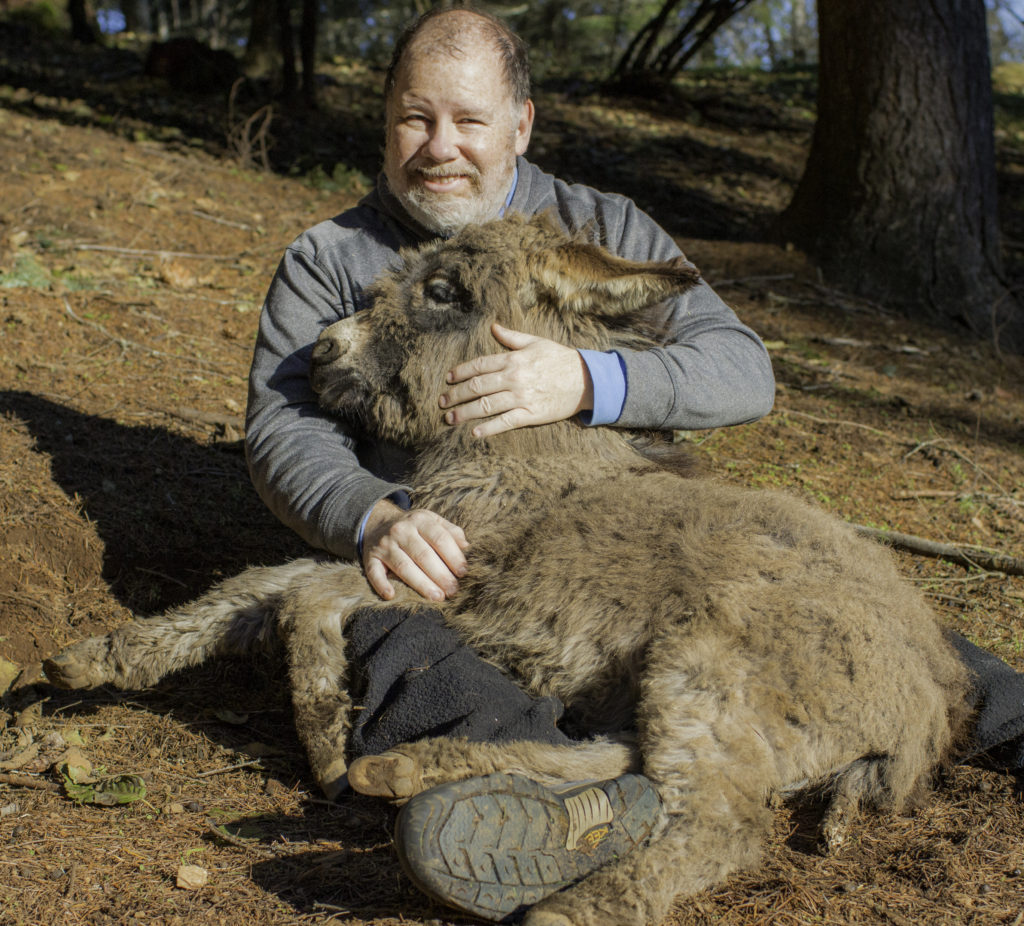I hear often from people whose pets “hate” baths, or having their nails done, or some other activity, and when I ask them to show me or tell me more, it is immediately obvious that the animal is not objecting to the activity per se, but to being restrained. So I wanted to discuss restraint…
Please take a few minutes to genuinely consider restraint from the animal’s perspective: for millennia restraint has meant injury or death. An animal’s ability to fight or flee is one of its most basic instincts, and restraint means the loss of these defense mechanisms. Most animals naturally fear this loss of control, often to the point of near hysteria, and they do not understand what is coming next. You may know that no harm is going to come to them, but they do not—they do not know if you are about to kill them or maim them, and they are literally afraid for their lives. Imagine someone dangling you off the roof of the Empire State Building… So if you are restraining your animal, and telling them to hold still, or that it is going to be okay, and they are resisting, they are not being bad, they are being remarkably good in that they are not biting you when really it would be well within their behavioral rights to do so!
Once you authentically understand what an animal is feeling
when being restrained, it becomes fairly easy to empathize and address their
fear. Restraint needs to be worked on without any secondary component—no bath,
no nails, no shots, nothing else. And no frustration, impatience, or anger on
your part. It needs to be trained and conditioned. Restraint is all about trust—and the more you
work on building your animal’s ability to handle restraint, the more you will
build trust; however, the reverse is also true—you want to avoid having to
force the issue of restraint if at all possible, as doing so fundamentally
violates his trust in you and sets the process back.
There are many exercises you can perform to work on restraint, but they are all somewhat similar. Essentially, you start gradually and build up, and you stop and release the restraint only when they are relaxed and accepting. Your goal is to start with essentially no restraint but in a position that mimics restraint, and then gradually begin restraining them and letting go before they fight against you. Timing is everything in this pursuit—go a moment too far and a struggle begins which you cannot really win. Patience is key—you do not need to get there in one session, or in twenty. If they are doing well, stop, do not try to go one step further, take your time!
I generally avoid using commands when working on restraint—sit,
down, stand, and especially stay. I do
not want to create a scenario in which their nervousness makes it impossible to
succeed. I may use a command to get them
into position, but then I release them before I begin restraining so that they
are not conflicted and stressed while trying to do what I asked.
Once they can remain relaxed during easy restraint, you can
start making it more demanding, and you can begin to push a tiny bit too far—the
new goal becomes letting them bump into the fact that they are restrained,
react just a bit, and then relax again. You want them to learn how to soothe
themselves when they feel restraint. The key here is always the timing of the
release—you want them to learn that relaxing is the path to release, so you
always release when they find that relaxation.
It is important not to push too far—if an animal shuts down and gives up, it may seem to solve the problem in the short term, but the anxiety has just been tamped down where it will cause physical, emotional, and behavioral issues, and will in all likelihood resurface explosively at a later date. Perhaps even more importantly, you will have decreased your animal’s trust in you instead of building it. Expect to spend on average 10-20 hours working on this, over the course of a month or two, and you will have an animal that can completely relax when being restrained, and then you can begin very gently adding other elements like nail trimming or bathing or whatever, always being mindful not to panic or injure.
Always be mindful that it is a very big deal for an animal to relinquish control of its body, and go slowly with maximal empathy, and you will do great…
Note: this post is about teaching an animal to be comfortable with restraint, which is a worthwhile lesson. It is not intended to imply that restraint is always the best solution. In many circumstances, you are better off training your animal to hold still without needing restraint–to place its foot where you want for nail trimming, or rest its chin statically while you perform many grooming or veterinary procedures. By doing this you can also teach your animal to move when not comfortable, so that he become an active and willing participant, but that is an entirely different process which is also worthwhile and I will discuss in a subsequent post…
